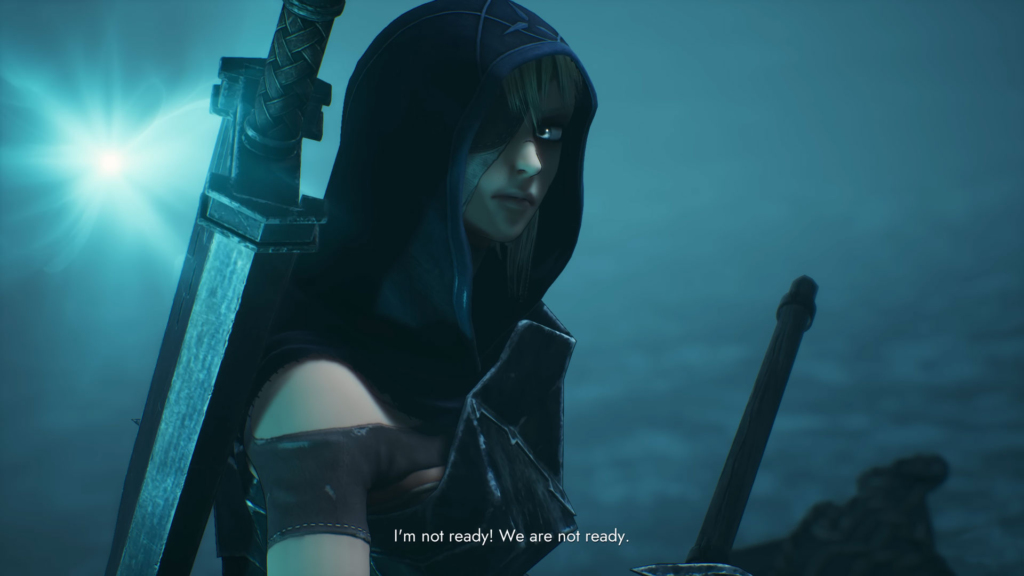Soulstice is a character-based action game that shows a lack of understanding of the genre’s overtone by adding features that dilute the thrill of direct fighting.
The hack-and-slash genre has slowly been shunned despite its widespread and rich history. With the rise of the soulslike genre over the last several years, many developers have attempted to create games similar to those made by From Software, relegating the once-dominant Hack & Slash subgenre to the edge. Soulstice has nothing to do with other games called Soulslike. Instead, it takes inspiration from the look and feel of the Devil May Cry series.
However, it does itself no favors by excessively copying from DMC and then falling short of its inspiration in every aspect. An uninspiring, character-based action game shows a lack of understanding of the genre’s overtone by piling on features diluting the thrill of direct fighting. While taking inspiration from a variety of new and old games and adding their unique touches, the game still seems narrow and without diversity.
Players assume control of a duo, Briar and Lute, who form a physical and spiritual bond in Soulstice. The two sisters have come together to become a chimera; in this dark fantasy world, chimeras are superhuman warrior pairings that fight against the forces of chaos. Briar can maintain her superhuman strength and agility as well as her physical appearance after undergoing the metamorphosis. While doing so, Lute transforms into a ghost that follows her everywhere and provides assistance with spiritual abilities.

In their capacity as members of the Order of the Ashen Edge, the sisters are making their way toward the city of Ilden. The plot is another outmoded fantasy narrative that tries to provide additional reasons for Briar, such as vengeance and acceptance from greater powers. This stale storyline needs a mood boost, and these concepts didn’t make it compelling enough for the audience to follow to the finish.
During the gameplay, you have simultaneous control of Briar and Lute. However, Briar continues to be your primary focus throughout the game as you travel and fight through her. However, Lute is also quite significant since she is necessary for creating force fields, which let you assault enemies that are resistant to more standard attacks. In the same vein, it enhances your ability to block or deflect strikes from your foes and perform a variety of spells that are more or less beneficial to the fight.
Each of the characters has a unique tree of skills. You can decide what you want to prioritize in order to pack your pair. Due to the brutal and fast nature of the action in Soulstice, gathering resources for the progression of your characters will not be a luxury you can afford to indulge in. But it’s reasonably simple to repeat through the overall game’s several stages.
Soulstice‘s fighting system gets the job done but isn’t great, and it certainly isn’t good enough to make up for the overpowering presence of a boring story. It does show off a few solid concepts that, at the right moments, can really shine and create that frenzy that we genre fans love so much. You may choose between Briar’s primary and secondary attack types at any time, and both are tied to certain weapons.

The traditional weak or strong blow combination is replaced with an automated weapon switch. As a result, you can’t pull off complicated combos as we do in games like Devil May Cry since switching weapons requires the character to have completed the previous animation. For this part, the basic combinations are presented in the form of skills we need to acquire by unlocking them.
Although it sounds easy on paper, this becomes clumsy and unpleasant during the Soulstice gameplay. By design, the system around Lute makes it such that only those who execute perfectly in battle have access to Briar’s transcending conditions. Lute effectively blocks and parries for you. When her opponents are ready to attack, she is given the option to stop them by pressing a button.
Although this allows you to block attacks from all sides while still attacking the enemy in front of you, it is not as dependable or satisfyingly tactile as having complete command of your defense.
You must always be aware of the context in which an interrupt occurs since Lute utilizes multiple types of interruptions depending on the situation. Hence, you never know whether, for example, an opponent’s assault has been canceled or only halted for a second. The quick windup animations for certain assaults are the only notice you receive before you’re hit.

In addition to that, Soulstice has some basic role-playing game mechanics. Lute may learn new strategies to defend her fierce sister, Briar, from enemies attempting to assault her, while Briar can improve her weapons and talents. You can level up by collecting shards, which are dropped by enemies and procedurally generated debris. Additionally, your Observer,
Layton has established stores where you can purchase collectibles and goods to improve the health of the Briar. Layton is always observing your every action. These upgrades provide brand-new maneuvers onto Briar and enhance the efficacy of Lute’s counters and powers. If you are able to demolish everything in your path, you will quickly gather an excess of red shards and blue shards, respectively, which are both required by Briar.
Despite all of these powers and layers of complexity, the enemies you will face will be very simple. The Corrupted are people who have been infected or diseased, and they appear in all the usual forms, including melee, ranged, and large men armed with hammers and shields.
The Wraith kinds are blue demons who float through the air and perform spells from a distance. These demons can only be injured by your active blue field when they are in proximity to it. Monsters of the Possessed are those rendered vulnerable while within a red area. These monsters may also take the form of flying sorts.

Most late-game opponent types tend to be fast, and it may be just as frustrating to deliver damage to them as it can be to maintain them near enough so that they are inside your range of vision. One of the late-game twists demands that you defeat an opponent of the red variety. Once you do so, blue Wraiths that inhabit the defeated adversary will emerge; if you cannot vanquish them in time, the blue Wraiths will retake the body, and you will have to defeat the red enemy once again.
Some puzzle components involve the red and blue fields, such as crystals covering the route that require the right field to be destroyed or scattered crystals, all connected to one large one, but nothing too tricky. If you go off the beaten route, you can uncover items that add to your health bar or Challenge chambers that put your combat skills to the test in a limited amount of time. Both Briar and Lute have huge talent trees, so you’ll want to gather as many additional crystals as possible.
However, if you’re having more trouble with the camera than the enemies, you may as well give up on Soulstice altogether. Outside the arenas where players engage in battle, the unusually fixed camera angles actually illustrate the environments rather well. You are free to roam about, but the camera will always remain in the same spot, indicating the path you should take to proceed.

As soon as you enter combat, it will no longer be bound, and if you target an adversary, it will keep its attention on that person. Regrettably, it does not actually frame the action constructively at all. If there are just a few enemies, you shouldn’t have any problems, but as the game goes on, more and more enemies will enter the battle, and the camera will have a harder time providing you with all the information you want.
When it comes to presentation, Soulstice shines and provides some gorgeous visuals. Though it’s not exactly an anime aesthetic like that of games like Code Vein, the studio has opted to deliver a finish that aims to be more cartoony than other titles. This makes the visual outcome more impressive in cases when the most complex strategies are used. Sadly, graphics performance will be subpar at this resolution.
The worst part is that the rendering is unimpressive regardless of the graphics option used between the game’s three graphics modes. The level design, on the other hand, made it seem like we were always back in the same place as the previous chapter throughout the whole game. The developers’ attention to detail in the game’s settings distracts from the fact that we would have appreciated more varied environments from them.
Soulstice, developed by Reply Game Studios, is perhaps the studio’s most audacious project to date. It’s a well-made game that does its best but nonetheless falls far below the genre’s best. Despite its fresh take on fighting and the dual blue and red field mechanism introduced in the game’s sister pair, Soulstice still seems like a carbon copy of other superior hack-and-slash titles.

In addition to Xbox Series X‘s performance concerns, the game’s disastrous camera tends to be a frequent source of annoyance. If these issues are addressed, Soulstice might stand out as a pleasant surprise and become an enjoyable game. Since there have been fewer new entries in recent years, there’s no harm in giving it a try if you’re a fan of this genre.
















